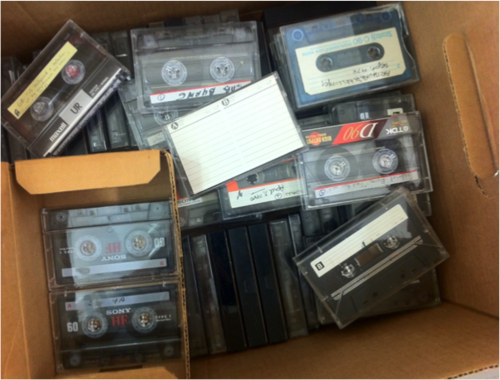By Nicole Greenhouse, Archivist at the Center for Jewish History
Currently, I am working on a project to arrange and
describe a 100 linear foot accretion to the American Jewish Congress Records
(I-77) at the American Jewish Historical Society. As I work through the
collection, I was struck by a run of the “Anti-Nazi Bulletin” that I found in a
few boxes of the records. These serials are from a deaccession of materials
from the Jacob Blaustein Library
of the American Jewish Committee. They were likely added to the
collection because a majority of
the serials in the series are related to the American Jewish Congress and its
activities. Although the “Anti-Nazi Bulletin” was not a project of the American
Jewish Congress, the organization worked
throughout its existence to combat anti-Semitism and discrimination.
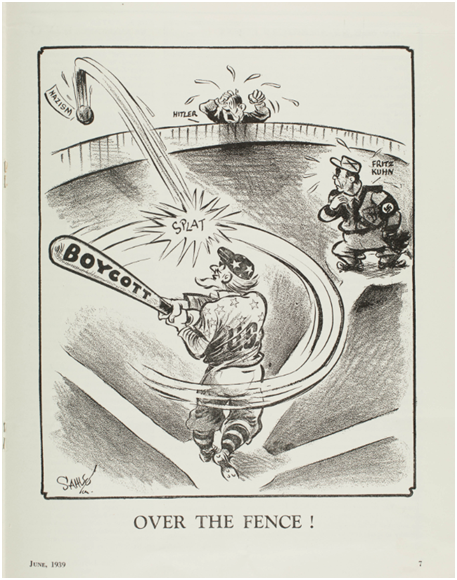
The Anti-Nazi Bulletin, June 1939; American
Jewish Congress, records; I-77; box 854; folder 15; American Jewish Historical
Society, New York, NY, and Boston, MA.
In fact, the “Anti-Nazi Bulletin” was the
publication of the Non-Sectarian Anti-Nazi League to Champion Human Rights,
founded in 1933. The aim of the organization under its first president, Samuel
Untermyer, was to raise awareness of Nazi activities and sympathies in the
United States and lead a boycott of Nazi goods. As public favor turned against
Nazi Germany, the organization shifted its reporting on hate groups in the
United States. For example, Wilhelm Kunze (national
leader of the German-American Bund), August Klapprott, and Mathias Kohler, were
arrested and convicted of violating a New Jersey state law that forbids the
incitement of racial and religious hatred. Here they are depicted as hiding
behind the guise of the Ku Klux Klan.
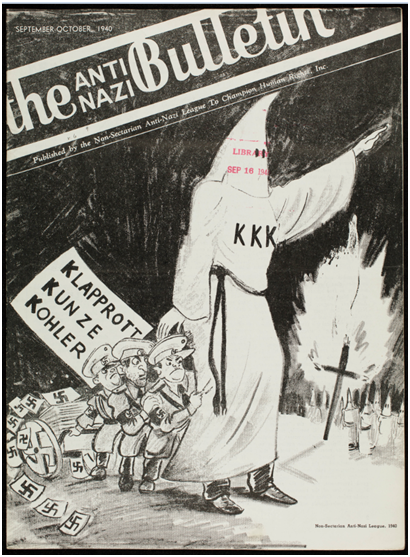
The Anti-Nazi Bulletin, September/October 1940;
American Jewish Congress, records; I-77; box 854; folder 15; American Jewish
Historical Society, New York, NY, and Boston, MA.
The artwork in the publications are striking,
equating the rise of Nazism as a threat on democracy and therefore, American
values. Uncle Sam often appears, literally stomping out fascism.
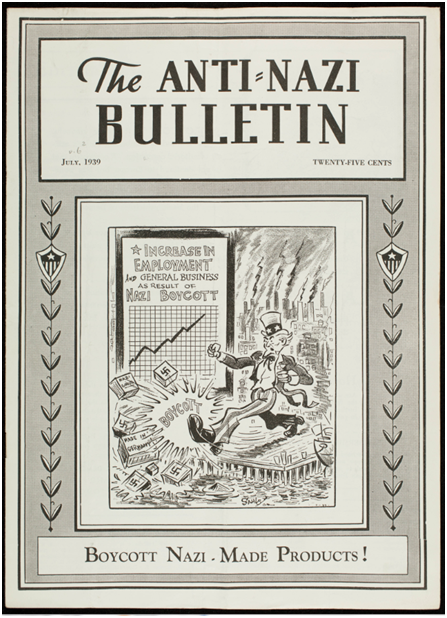
The Anti-Nazi Bulletin, July 1939; American
Jewish Congress, records; I-77; box 854; folder 15; American Jewish Historical
Society, New York, NY, and Boston, MA.
Other cartoons depict Nazi leaders infiltrating
American activities to push out propaganda to unsuspecting audiences. The
publication also uses the power of art to call out white supremacist groups,
specifically the Ku Klux Klan, as Nazi sympathizers. Besides cartoons, the
bulletin also published images from pro-Nazi activities in the United States.
The following image in this post is the back cover of the June 1940 issue, of a
Nazi rally on Randall’s Island in New York City.
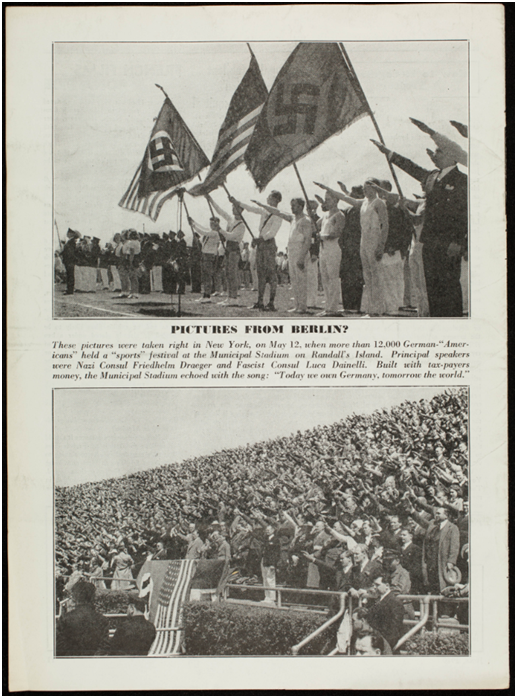
The Anti-Nazi Bulletin, June 1940; American
Jewish Congress, records; I-77; box 854; folder 15; American Jewish Historical
Society, New York, NY, and Boston, MA.
Although these images were taken over 75 years ago,
they are still highly relevant. White supremacists in the United States, as we
saw in Charlottesville in August of this year, use Nazi symbols to disseminate
hate against Jews, people of color, LGBTQ, and other minority groups. Using
historical resources, we can learn from organizations like the Anti-Nazi League
to Champion Human Rights to combat fascism and anti-Semitism in the present day
United States.

The Anti-Nazi Bulletin, September-October 1939;
American Jewish Congress, records; I-77; box 854; folder 15; American Jewish
Historical Society, New York, NY, and Boston, MA.
Although this specific set of periodicals is
currently unavailable for view in the Lillian Goldman Reading Room, while the
collection is being processed, a run of the publication is held by another of
the partner institutions, YIVO Institute for Jewish Research. You can view
these materials in the Lillian Goldman Reading Room by logging into your Aeon
account and requesting the item at this link: http://search.cjh.org/beta:CJH_SCOPE:CJH_ALEPH000022312.
If you want to learn more about the Non-Sectarian Anti-Nazi League to Champion
Human Rights, the records are held by the Rare Book and Manuscript Library at the Columbia University
Library. The finding aid is here: http://findingaids.cul.columbia.edu/ead/nnc-rb/ldpd_4079169/. Stay tuned for more dispatches from the
processing of the American Jewish Congress Records, the first 843 boxes are
available for research: http://digifindingaids.cjh.org/?pID=365446

